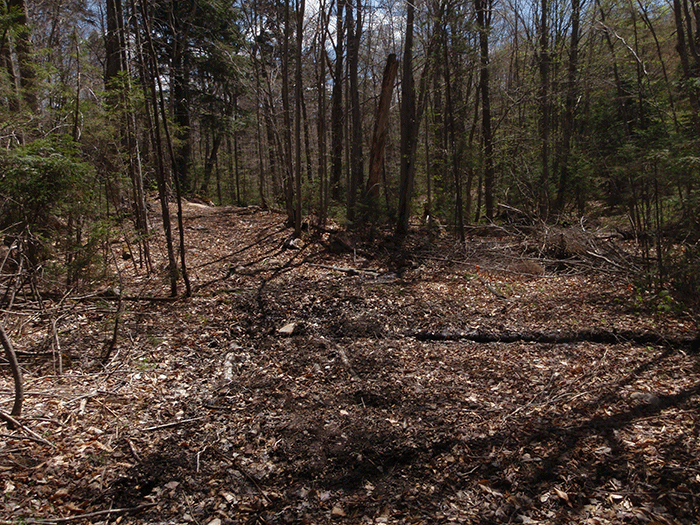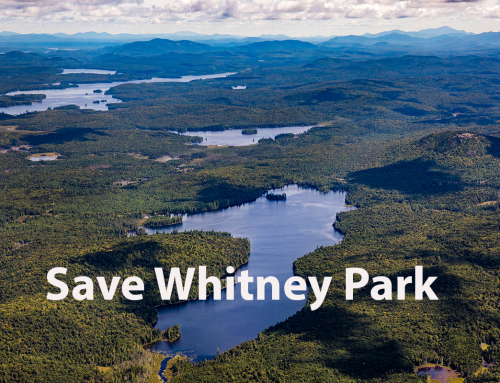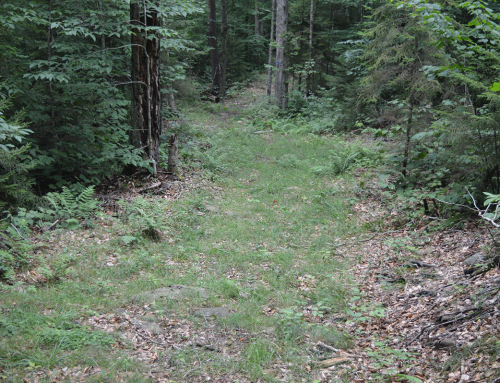The Seventh Lake Mountain snowmobile trail that connects to communities of Indian Lake, and those further south, to Raquette Lake without having to pay the Inlet-Old Forge trail system fee has been controversial since it was approved in the Moose River Plains Wild Forest UMP. This trail has been litigated twice and is currently the focus of a third lawsuit brought by PROTECT.
A field visit to this trail in mid-May 2014 found that the trail remains a mess from an environmental standpoint and contains various design features that violate existing state law and policy. The trail is designated by the Adirondack Park Agency (APA) and the Department of Environmental Conservation (DEC) as a “class II community connector” snowmobile trail pursuant to the controversial “Guidance” document they developed and approved, despite widespread condemnation from the environmental community. As such, this trail can be 9 feet wide on straightaways and 12 feet wide of sharp curves and steep downhills. The Guidance states a “12 foot maximum cleared area” is allowed. A visit in May found a trail routinely 14-16 feet in width and and many places 16-20 feet wide.
Click here for information on the PROTECT lawsuit. Click here for information about a field visit in the fall of 2012.
Under the Adirondack Park State Land Master Plan snowmobile trails are defined as “a marked trail of essentially the same character as a foot trail designated by the Department of Environmental Conservation on which, when covered by snow and ice, snowmobiles are allowed to travel and which may double as a foot trail at other times of year.” Under the NYS Constitution all Forest Preserve lands are to “forever be kept as wild forest lands.”
The pictures below show a trail that does not have “essentially the same character of a foot trail” and in no way is being managed to be “forever kept as wild forest lands.”
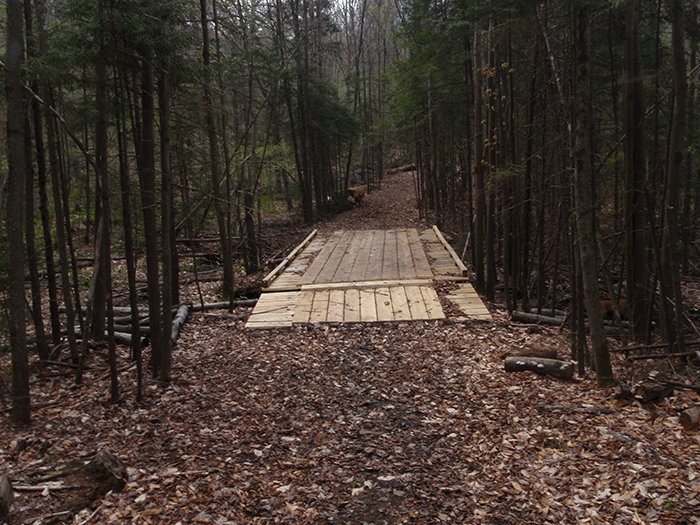
The Seventh Lake Mountain Trail, a class II community connector snowmobile trail, includes dozens of large 12-foot-wide bridges to support multi-ton groomers. This is a design feature that is not used for foot trails.
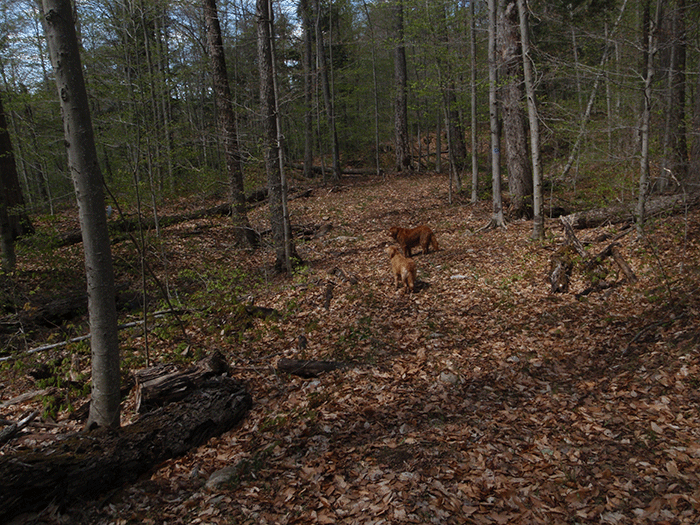
The Seventh Lake Mountain Trail, a class II community connector snowmobile trail, is routinely wider in many places that the 9-12 feet allowed under state policy.
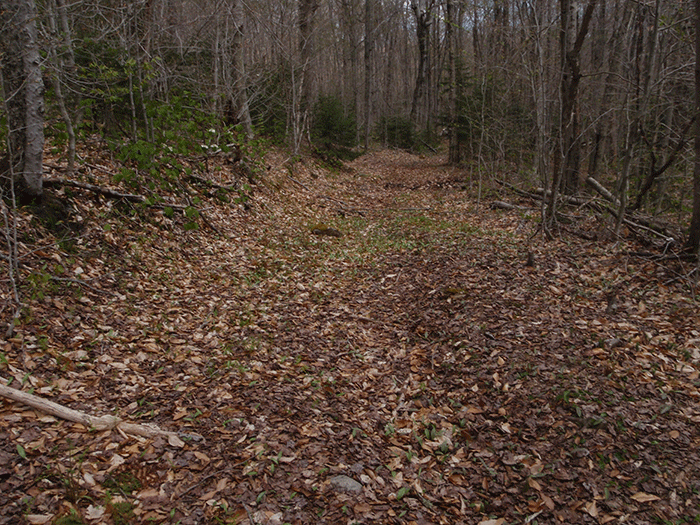
The Seventh Lake Mountain Trail, a class II community connector snowmobile trail, includes extensive areas graded flat like the stretch of trail pictured above. This is a design feature that is not used for foot trails.
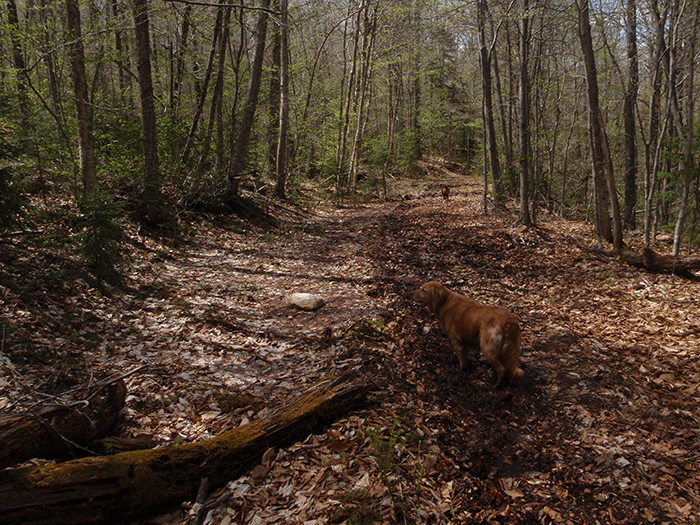
The Seventh Lake Mountain Trail, a class II community connector snowmobile trail, includes thousands of feet of “bench cuts” into hillsides like those pictured above. This is a design feature that is not used for foot trails.
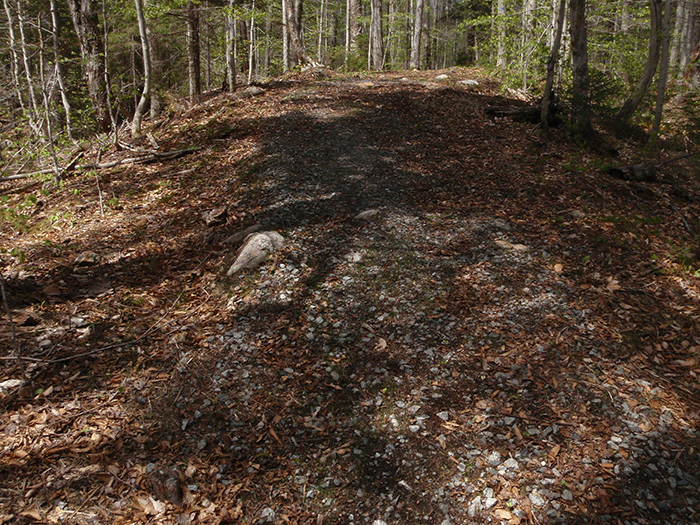
The Seventh Lake Mountain Trail, a class II community connector snowmobile trail, includes where gravel has been applied to stabilize the trail surface like the stretch of trail pictured above. This is a design feature that is not used for foot trails.
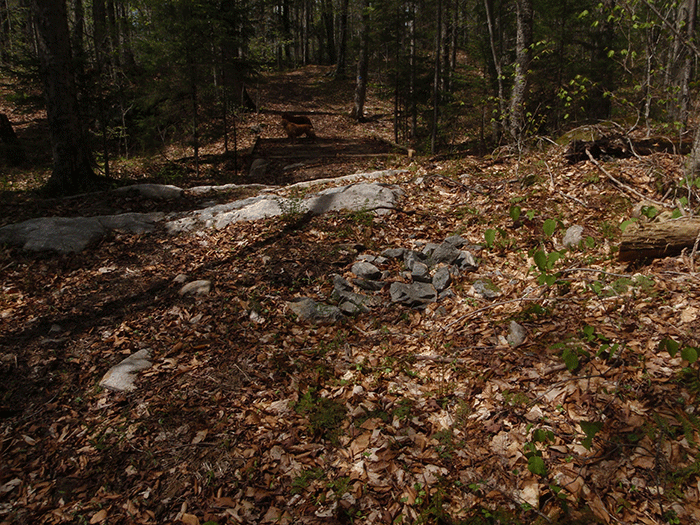
The Seventh Lake Mountain Trail, a class II community connector snowmobile trail, includes a place where bedrock was chipped away, such as that pictured above. This is a design feature that is not used for foot trails.
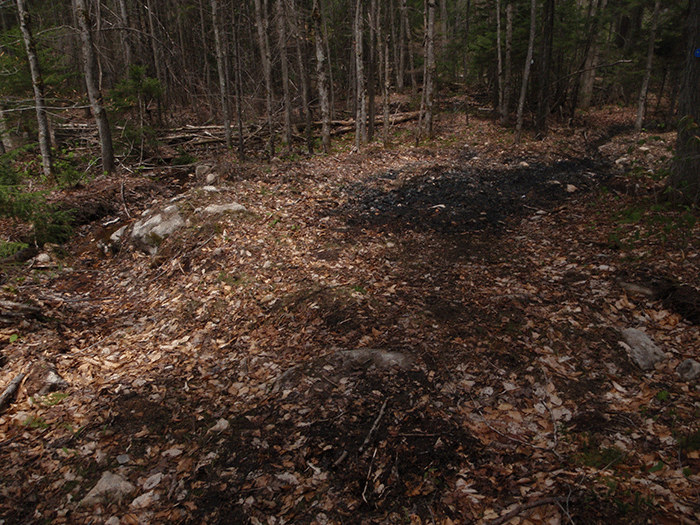
The Seventh Lake Mountain Trail, a class II community connector snowmobile trail, includes a number of places with large trailside drainage ditches like those pictured above on the left. This is a design feature that is not used for foot trails.
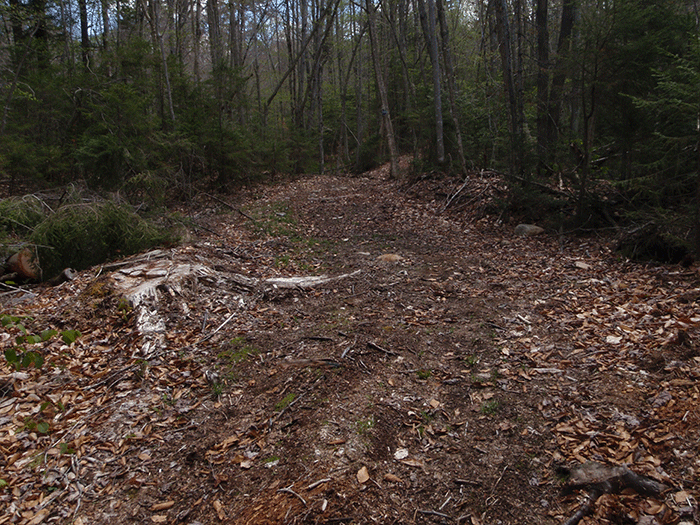
The Seventh Lake Mountain Trail, a class II community connector snowmobile trail, saw over 2,000 trees cut down and destroyed. This is a design feature that is not used for foot trails.
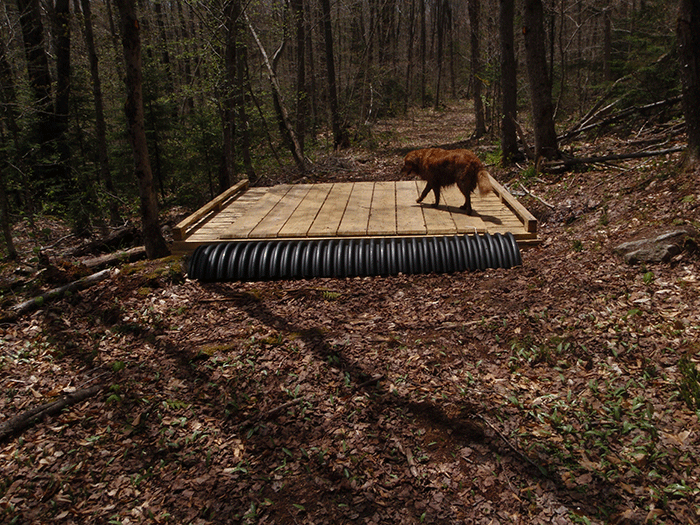
The Seventh Lake Mountain Trail, a class II community connector snowmobile trail, includes use of non-natural materials like the half culvert pictured above to create ramps for snowmobiles and groomers to access a bridge. This is a design feature that is not used for foot trails.
In addition to the design elements detailed above that show how this snowmobile “trail” violates the SLMP requirements that it be maintained with the “character of a foot trail” and violates the State Constitution’s requirement that the Forest Preserve be “forever kept as wild forest lands” there are many places along this trail that openly violate APA-DEC policy, work plans, the state snowmobile plan, UMP, and other state policies due to clearing in many places well beyond 12 feet. Despite a history of enforcement actions against the DEC for these actions in the past in the Vanderwhacker Mountain Wild Forest area, the Blue Mountain Wild Forest area, and in the Watson’s East Triangle Wild Forest area, the APA has refused to do any field investigations. Rather, the APA has preferred to turn a blind eye to infractions by the DEC.
Here are pictures of a few areas well over 15 feet in width that were cleared by DEC field operations to build this trail. There are scores of such locations along this trail.
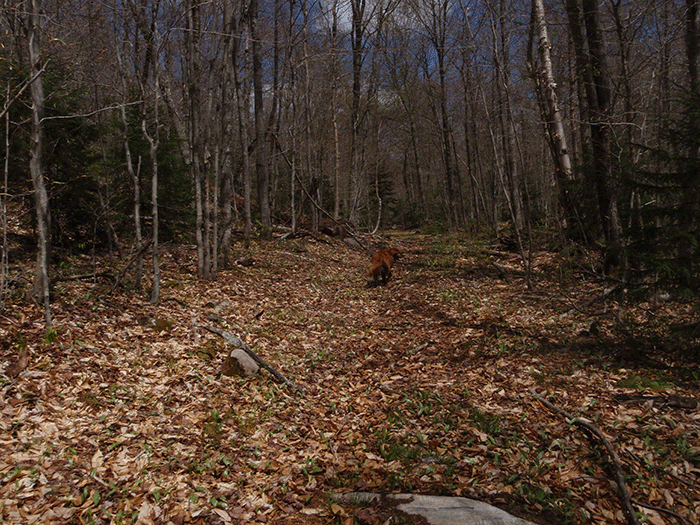
A section of the Seventh Lake Mountain Trail that is cleared to a width well over the “12 foot maximum cleared area” allowed under state policy. This is one of scores of such cleared areas on this “trail.”
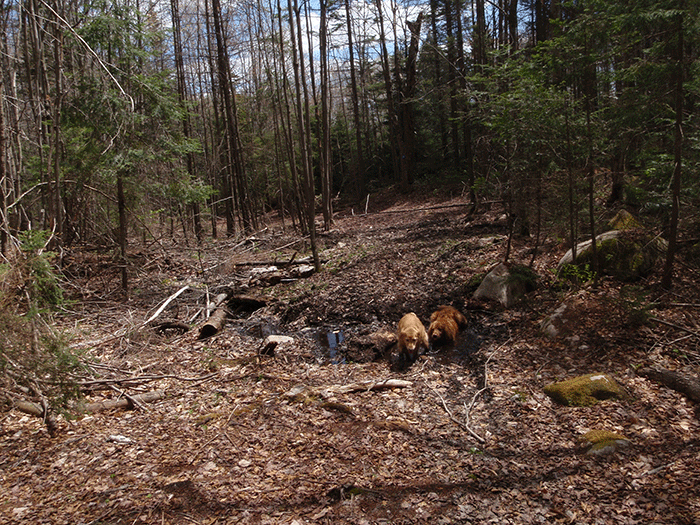
Another section of the Seventh Lake Mountain Trail that is cleared to a width well over the “12 foot maximum cleared area” allowed under state policy. This is one of scores of such cleared areas on this “trail.”
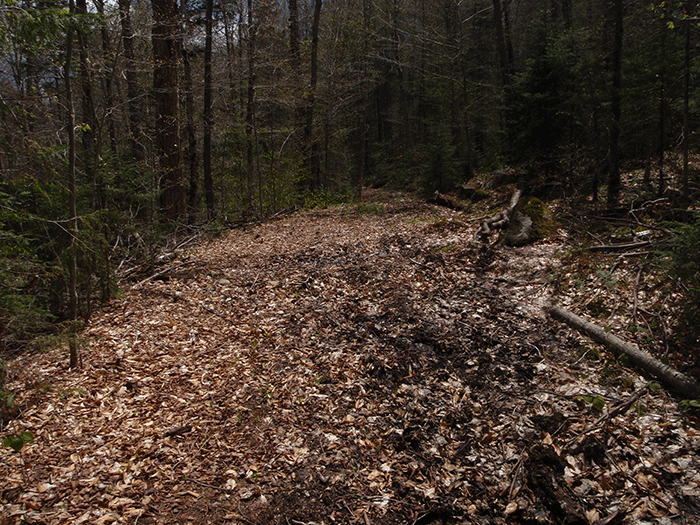
Another section of the Seventh Lake Mountain Trail that is cleared to a width well over the “12 foot maximum cleared area” allowed under state policy. This is one of scores of such cleared areas on this “trail.”
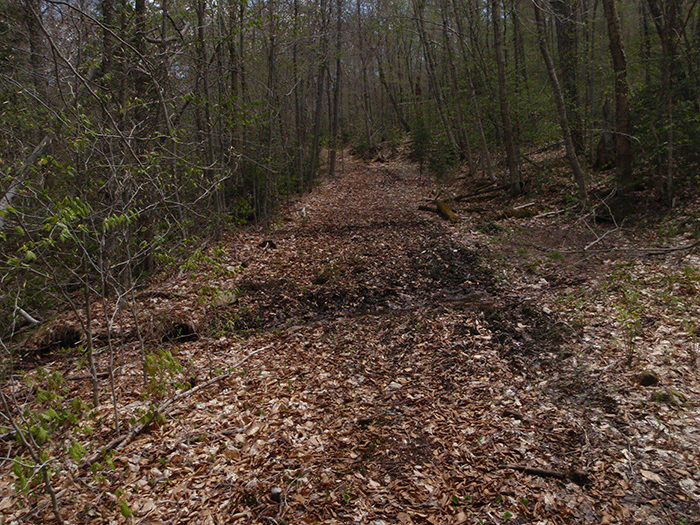
Another section of the Seventh Lake Mountain Trail that is cleared to a width well over the “12 foot maximum cleared area” allowed under state policy. This is one of scores of such cleared areas on this “trail.”
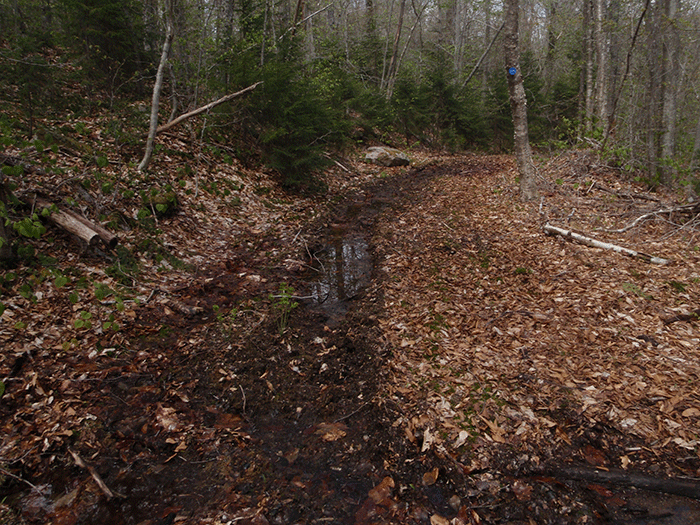
Another section of the Seventh Lake Mountain Trail that is cleared to a width well over the “12 foot maximum cleared area” allowed under state policy. This is one of scores of such cleared areas on this “trail.”
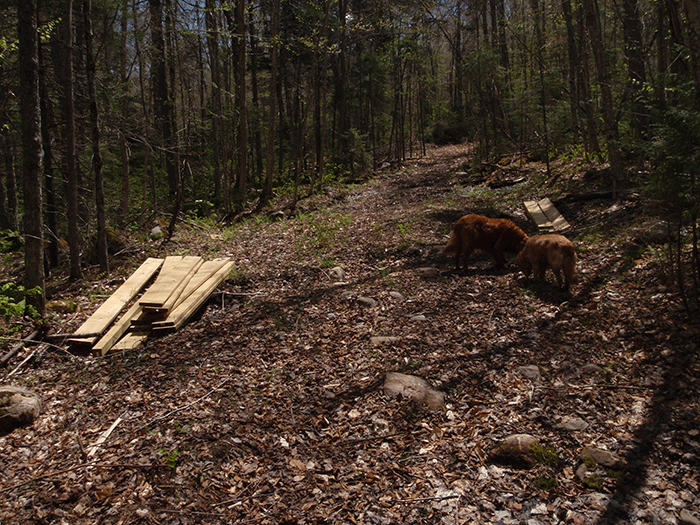
Another section of the Seventh Lake Mountain Trail that is cleared to a width well over the “12 foot maximum cleared area” allowed under state policy. This is one of scores of such cleared areas on this “trail.”

